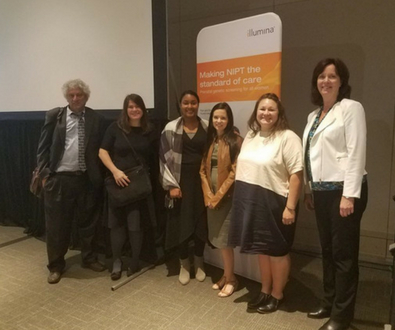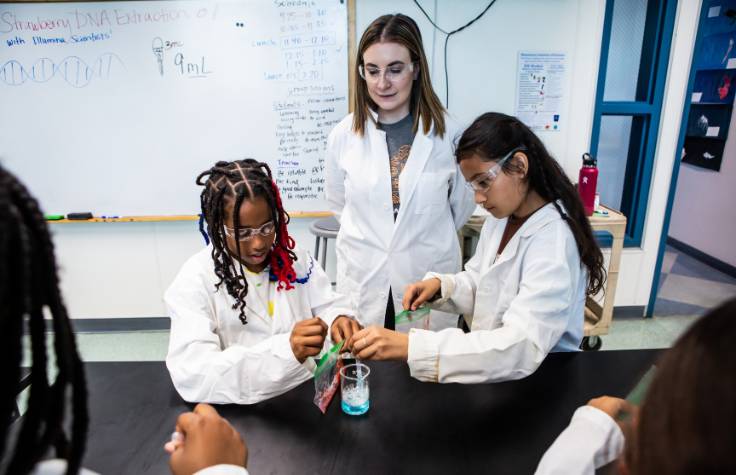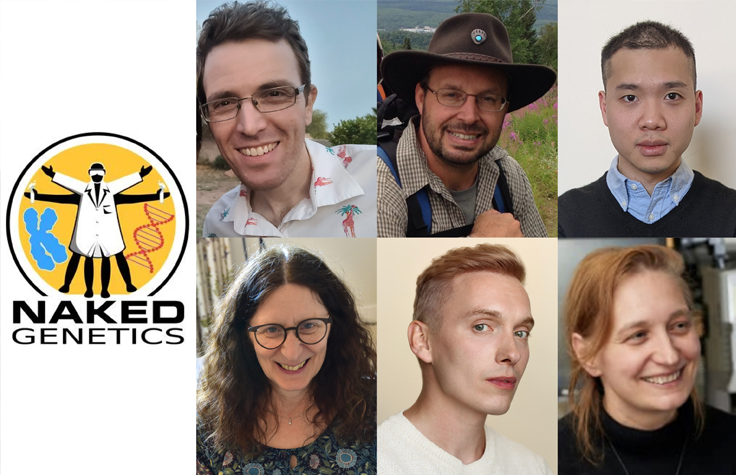
10 May 2018
At the 2018 American College of Obstetricians and Gynecologists (ACOG) annual meeting in Austin, Texas, Illumina sponsored an emerging technologies session on building a comprehensive non-invasive prenatal testing (NIPT) program for patients (pictured above). The session was designed so clinicians, advocacy leaders and patients could come together to engage in a discussion on the utilization of NIPT for all pregnant women, regardless of maternal age.
NIPT analyzes cell-free DNA from a maternal blood sample to screen for fetal aneuploidy that are common chromosomal conditions including trisomy 21 (Down syndrome), trisomy 18 (Edwards syndrome), trisomy 13 (Patau syndrome) and trisomies of other chromosomes. NIPT is highly accurate in determining chromosomal abnormalities and could prevent the need for invasive testing. However, many clinicians do not currently recommend the test to their patients, or limit their recommendations to expectant mothers who are considered high-risk (e.g., advanced maternal age of 35 years or older, or families with a history of previously affected pregnancies).
Illumina’s Gautam Kollu, Vice President of Global Market Development, and Carolyn Dumond, Senior Manager of Market Development and Patient Advocacy, discuss the importance of NIPT education and its crucial role in increasing access to this important technology for expectant mothers.
What was the reasoning behind sponsoring an event at the ACOG conference?
Gautam: We wanted healthcare providers to gain the full perspective from clinicians, advocacy leaders and patients on the utilization of NIPT for all pregnant women, regardless of risk. Whether providers had been offering NIPT to all of their patients, or a select few, this session was designed to give them a better understanding of NIPT’s capabilities.
Carolyn: Through expert presentations and panel discussions, we took an in-depth look at NIPT as it relates to the screening population, results delivery, post-test counseling and availability of patient education resources.
Several patients took part in the informational sessions as well. Why is it so important to hear from them on this topic?
Gautam: The patient voice is critical, especially in the age of personalized medicine. Hearing patients speak first-hand is a powerful reminder of the impact that NIPT can have in clinical care, as opposed to just hearing clinical data. Women who have had NIPT found it to be an important and accurate tool which helps them navigate their pregnancy.
Carolyn: Patient testimonials reinforce the importance of NIPT and the need for resources to help guide decisions in their pregnancy journey. Healthcare professionals can learn from the patient voice – what works, what doesn’t, what to say and what resources to provide.
What role can advocacy organizations play in NIPT education?
Carolyn: Advocacy organizations play an important role in education, as they too can provide a different perspective for patients and providers who may be considering NIPT. Many advocacy organizations have developed high-quality materials for expectant parents who are looking for information about pregnancy screening or testing, and the conditions screened for with NIPT. Industry leaders can utilize the rich content developed by advocacy organizations by directing healthcare providers to this educational material. This accurate, current and patient accessible information can be used prior to an NIPT screen or during a post-test consultation.
Where does NIPT coverage stand currently in the U.S.? What needs to change?
Gautam: Many payers limit NIPT coverage or restrict immediate access to high-risk pregnancies only, while NIPT for women with average-risk pregnancies (under 35 years of age) remains restricted by payer management programs or uncovered by some major insurance companies who cite the lack of studies demonstrating clinical utility in practice. Illumina recently partnered with Harvard Pilgrim Health Care to accelerate wider patient access and reimbursement of next-generation sequencing (NGS) for NIPT. This agreement is the first of its kind in NGS, and we’re hoping that the data collected from this partnership will help show insurance companies not currently providing coverage for NIPT, why they should be doing so. In addition, we need to educate payers and the doctors within their networks what the unintended consequences to a patient could be by delaying or restricting coverage to a test as valuable as NIPT.
We’ve previously highlighted the important role of genetic counselors (GCs) in a Q&A with Illumina’s Patricia Winters. However, the number of GCs is limited, and patients don’t always have access to them. What role do OB/GYNs have to play in order to provide patients with the expertise that GCs usually provide?
Gautam: OB/GYNs, and their office staff, are often the first and primary point of contact for a pregnant mother. OBs are expected to educate and guide expectant mothers through their pregnancies. It’s critical that OBs understand how to utilize NIPT to provide their patients with the most accurate, accessible screening available.
Carolyn: There are many ways Illumina helps educate OBs to empower them to have important conversations with their patients regarding NIPT. From webinars, to handouts, to grants to ACOG. To further enhance genetic education for OBs, we believe it is important to work together to help increase an OBs comfort with NIPT. Illumina is actively working on additional educational resources for healthcare providers, as well as patients.
ACOG Twitter Handle: @AcogNews


